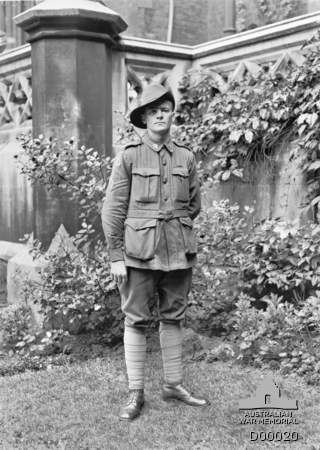Country Australia | ||
 | ||
Size ~1,000 officers and men Part of 13th Brigade4th Division | ||
The 50th Battalion was an infantry battalion of the Australian Army. It was originally raised in 1916 for service during the World War I and took part in the fighting in the trenches of the Western Front in France and Belgium before being amalgamated with the 51st Battalion in early 1919 following the German Spring Offensive reduced the numbers in both battalions. After the war, the battalion was briefly reformed as a part-time unit based initially in South Australia and then later in Tasmania. At different periods it was amalgamated with both the 10th and 12th Battalions. The battalion did not see combat during World War II, and it was disbanded in mid-1945.
Contents
World War I
The 50th Battalion was originally raised in Egypt on 26 February 1916 as part of the reorganisation and expansion of the AIF following the Gallipoli campaign. This was achieved by transferring cadres of experienced personnel predominately from the 1st Division to the newly formed battalions and combining them with recently recruited personnel who had been dispatched as reinforcements from Australia. With an authorised strength of just over 1,000, the unit's first intake of personnel were drawn from men originating from South Australia, many of whom had already served with the 10th Battalion. Under the command of Lieutenant Colonel Frederick Hurcombe, the battalion became part of the 13th Brigade attached to the 4th Australian Division.
After arriving in France on 11 June 1916, the battalion was committed to the fighting, taking part in the Battle of Mouquet Farm during August and September. Following this, it saw service on the Hindenburg Line, participating in the battles at Messines and Polygon Wood in 1917. During actions at Noreuil on 2 April, Private Jørgen Jensen was awarded the Victoria Cross. In early 1918, it assisted in repulsing the Spring Offensive, a major German offensive on the Western Front following the collapse of Russia. On the morning of 24/25 April 1918—Anzac Day—the battalion took part in an Allied counter-attack at Villers-Bretonneux, in Belgium. In August, the 50th joined the final Allied offensive of the war around Amiens, and continued fighting until 18 September when it fought its last battle of the war against the Hindenburg "Outpost Line", forming the divisional reserve. After the cessation of hostilities, the 50th Battalion was amalgamated with the 51st Battalion on 6 March 1919; together they were later also amalgamated with the 49th Battalion.
During the fighting, the battalion lost 720 men killed in action or died on active service and 1,557 wounded. Members of the battalion received the following decorations: one Victoria Cross (VC), one Distinguished Service Order (DSO) with one Bar, one Officer of the Order of the British Empire (OBE), 16 Military Crosses (MCs) with two Bars, 16 Distinguished Conduct Medals (DCMs), 122 Military Medals (MMs) with five Bars, eight Meritorious Service Medals (MSMs), 25 Mentions in Despatches (MIDs) and eight foreign awards.
Inter-war years and World War II
In 1921, the battalion was re-raised as part the re-organisation of the Australian military that took place at that time. Assigned to the 4th Military District, the battalion was raised as a part-time unit in South Australia, drawing personnel from the Citizen Forces' 50th Infantry Regiment. In 1927, the battalion adopted the territorial designation of the "Barrier Regiment". In 1930, amidst the austerity of the Great Depression and following the election of the Scullin Labor government and the subsequent suspension of the compulsory training scheme, the decision was made to amalgamate the battalion due to a decline in the numbers of volunteers. At this time it was merged with the 10th Battalion, with whom they had a shared history, to become the "10th/50th Battalion" assigned to the 3rd Brigade.
These battalions remained linked until 1936 when, in response to fears of a possible war in Europe following the reoccupation of the Rhineland, it was decided to expand the size of the Militia. As a result, on 1 October 1936 the 10th/50th Battalion was split. It was later transferred to the 6th Military District in Tasmania. It was then amalgamated with the 12th Battalion as the "12th/50th Battalion (The Launceston Regiment/The Tasmanian Rangers)" in December 1936. In 1939, the 12th/50th was awarded the motto Quo fas et gloria ducunt.
During World War II, the two battalions remained linked, undertaking garrison duties in Australia. The 12th/50th Battalion served as part of York Force and undertook garrison duties in the Northern Territory. On 2 May 1945 the 12th/50th Battalion was amalgamated with the 40th Battalion and became the 12th/40th Battalion with the 50th Battalion being disbanded. In 1966, following the reintroduction of national service, the Army authorised the re-raising of the 50th Battalion as part of the Royal Tasmania Regiment, as a remote area battalion within the Citizens Military Force, offering special conditions of service for national servicemen who could not meet their training requirements through normal attendance due to their occupation or place of residence. Ultimately, only a small number of special conditions soldiers were enlisted, and as a result 50 RTR was not re-raised, with the Tasmanian personnel instead being allocated to the 22nd Battalion, Royal Victoria Regiment, which had also been raised as a remote area battalion.
